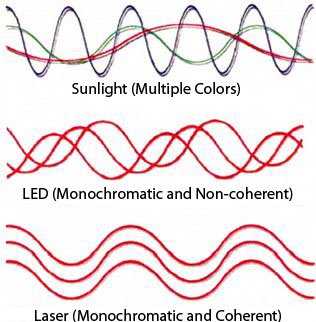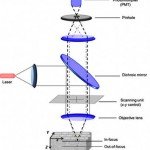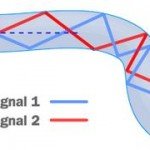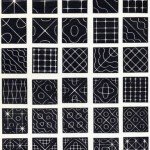What is Monochromatic Light ?
When sunlight is passed through a prism, it spreads out into its component colors and forms a rainbow. The pattern of colors that appears as the light emerges from the prism demonstrates that many different colors of light combine to form sunlight. This much is well known. Essentially the same thing, however, can be done with many other sources of light and with essentially the same result. (The rainbow effect is often harder to observe for other light sources because the light that enters the prism is often too weak to produce a bright rainbow as it emerges.) Nevertheless, most light sources, whether they are incandescent bulbs or stars, are composed of many different colors of light.
The precise mix of colors present in each light source and the intensity of each color depend very much on how the light was produced. As a consequence, different light sources generally produce different rainbows, and each rainbow reveals a great deal about the source of light from which it came. Because the human eye perceives different frequencies of light waves as different colors—and because frequencies and wavelengths are closely related—the rainbow also reveals information about the wavelengths of light that are present in any given source. Light produced by many lasers, however, is monochromatic—that is, if laser light is passed through a prism, the light that emerges will look exactly like the light that entered. If a beam of red laser light entered a prism, for example, a beam of red light will emerge.
The “rainbow” consists of exactly one color. (Scientists have also learned how to create lasers that shine light at two, or even a few, colors, but these refinements will not be discussed here.) In other words, the form of light produced by a laser is extremely simple and regular. It can be visualized as the wave in the illustration, where a wave is depicted as a series of regularly spaced crests and troughs. Because the wave is so simple-looking, it makes sense to describe it in terms of its wavelength (or in terms of its frequency). Because the wavelength of visible light is so short, scientists often describe it in terms of nanometers. One nanometer is one billionth of a meter. While this is a convenient vocabulary to describe laser light, it makes no sense to talk about the frequency of sunlight, for example, because sunlight is composed of light waves of many different frequencies. Whether laser light is described in terms of its color or its wavelength may not seem to matter. Because the human eye perceives different wavelengths as different colors, the two descriptions may seem equivalent, but there are two reasons that it is better to categorize laser light by wavelength (or frequency) rather than color.
First, not all laser light is visible. Many common lasers “shine” at wavelengths that cannot be perceived by the human eye. Some of the lasers created for use in the operating room, for example, cannot be seen. The electromagnetic waves emanating from these lasers have wavelengths that are somewhat longer than those of red light, and the light waves that we perceive as red are the longest electromagnetic waves visible to the unaided eye. Their effects are visible, but the laser beams are not. While it makes no sense to describe the “color” of invisible electromagnetic waves, it makes perfect sense to describe these waves in terms of their wavelengths. Second, describing light in terms of its component wavelengths enables one to be more precise.
The human eye is not sensitive enough to distinguish two monochromatic light sources that have nearly identical wavelengths. Such lights are not the same, but they may well look the same. A wavelength description allows the observer to distinguish between two different but identical-looking waves.



























